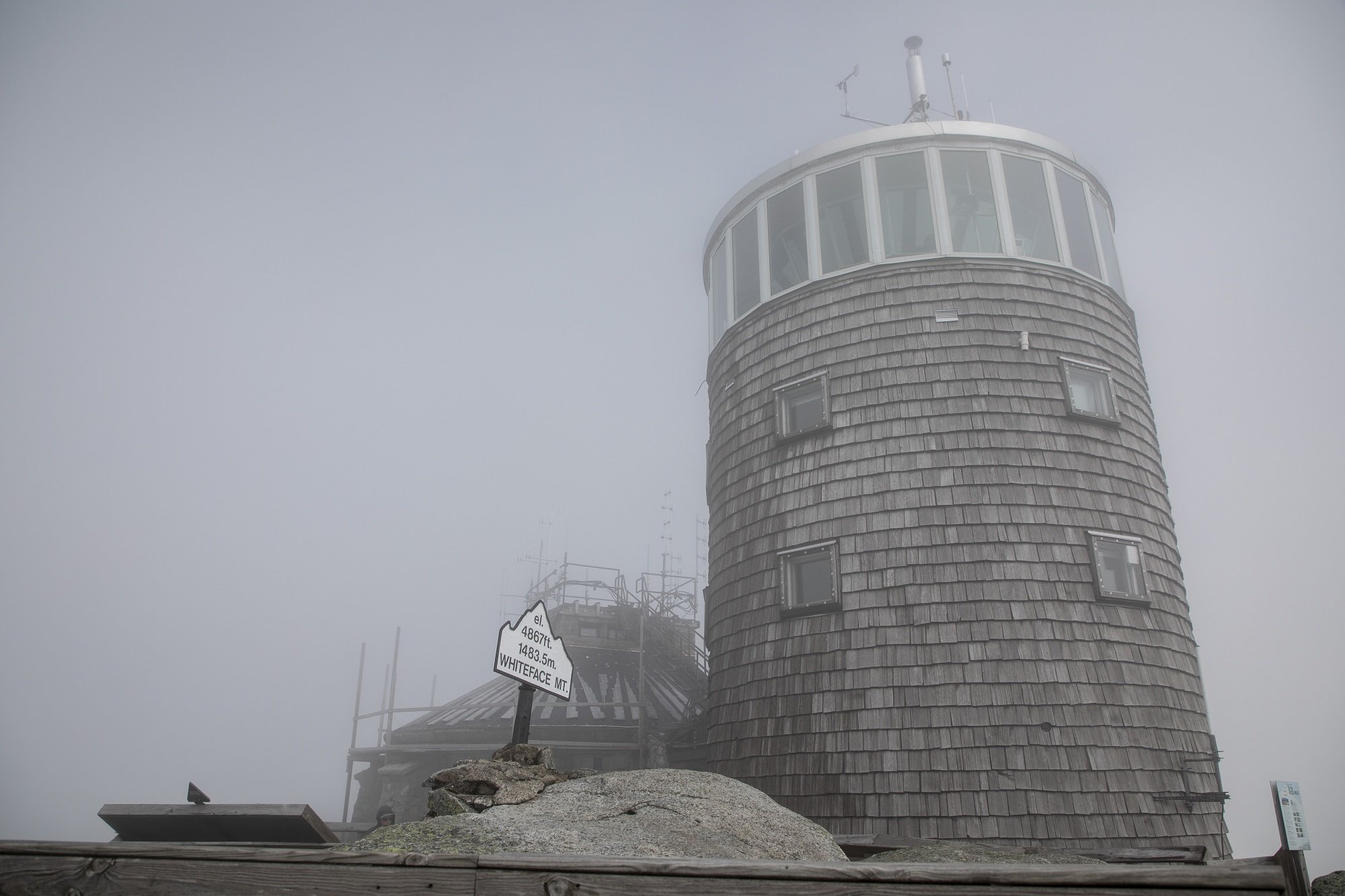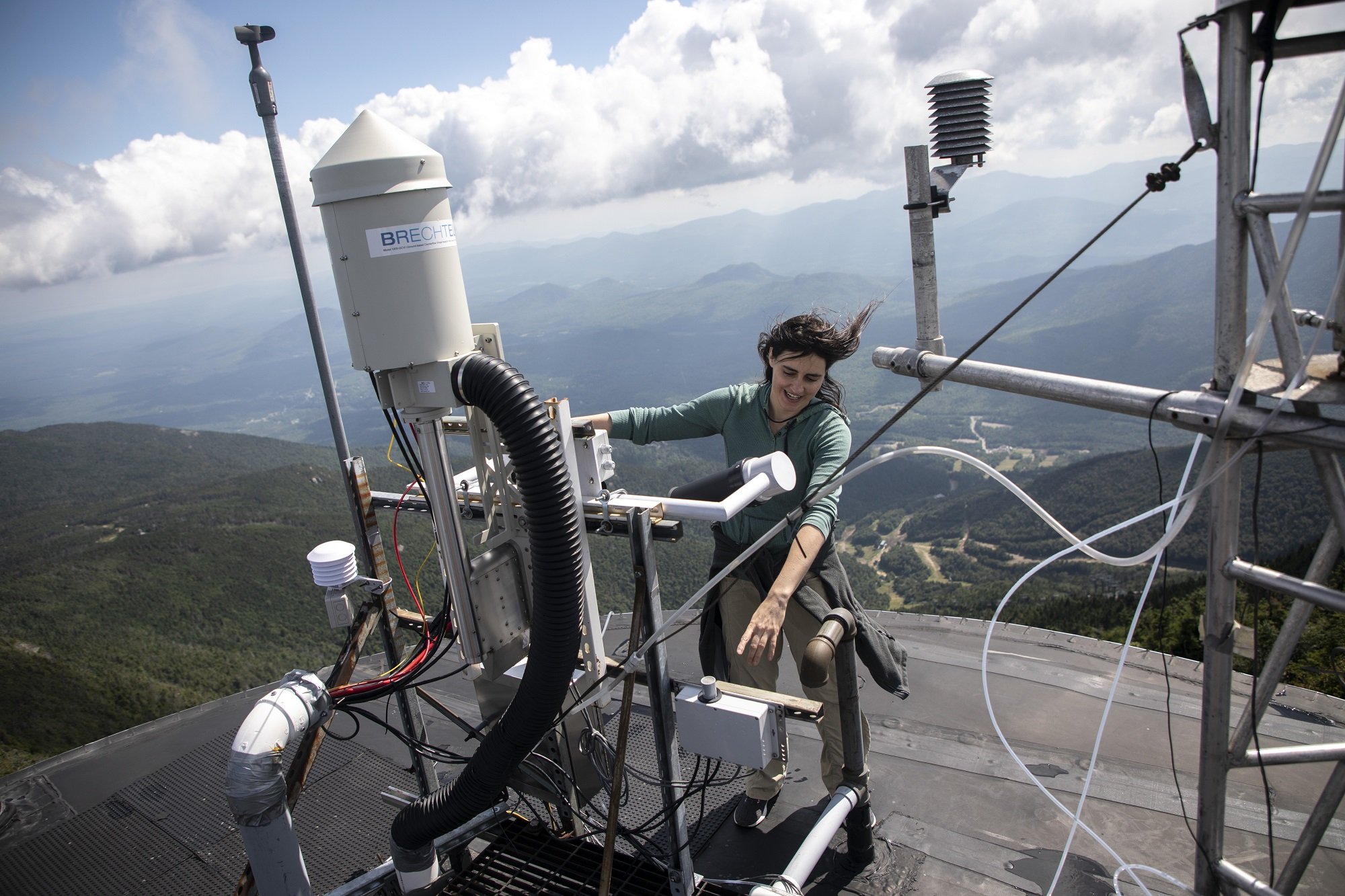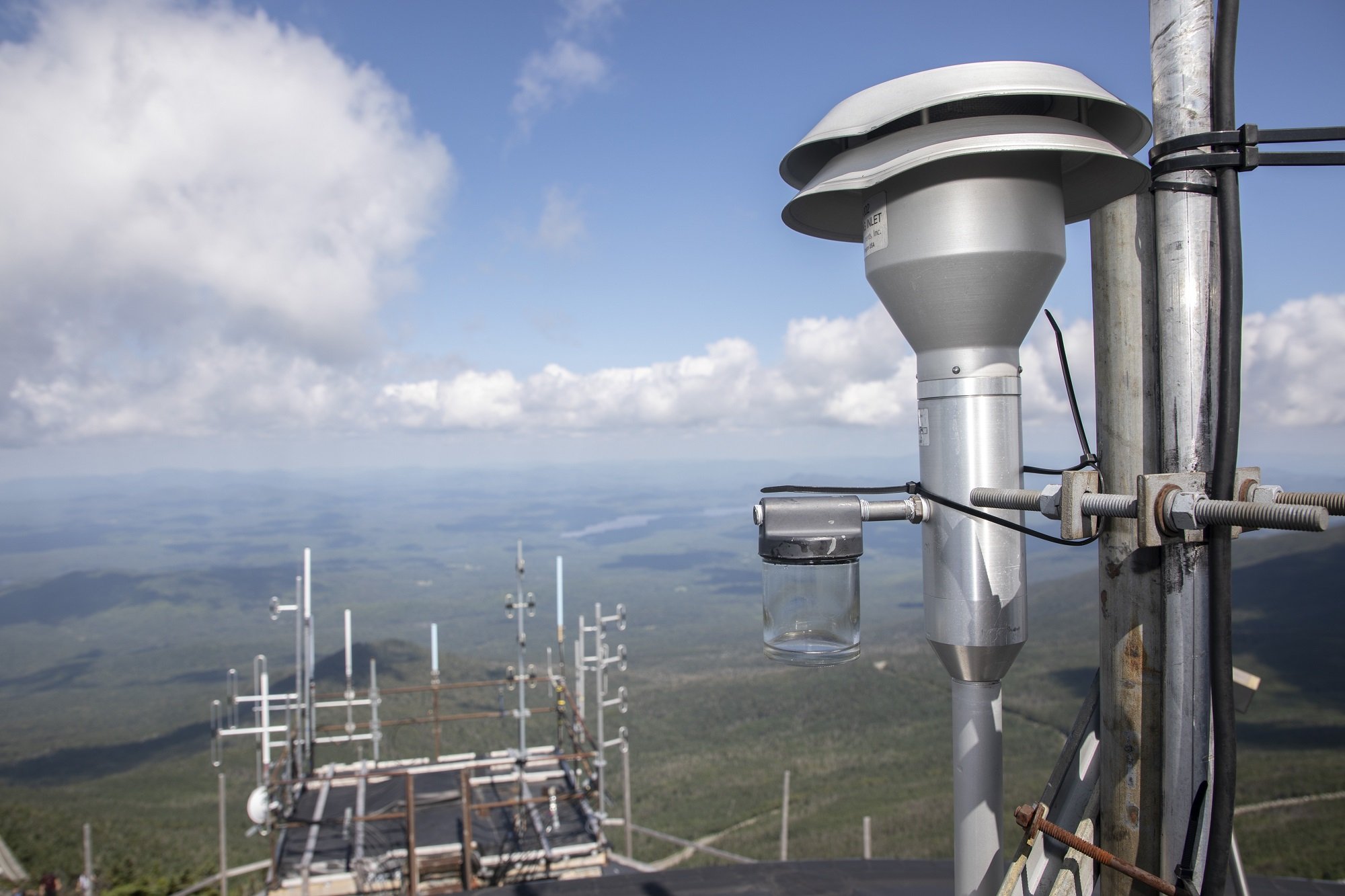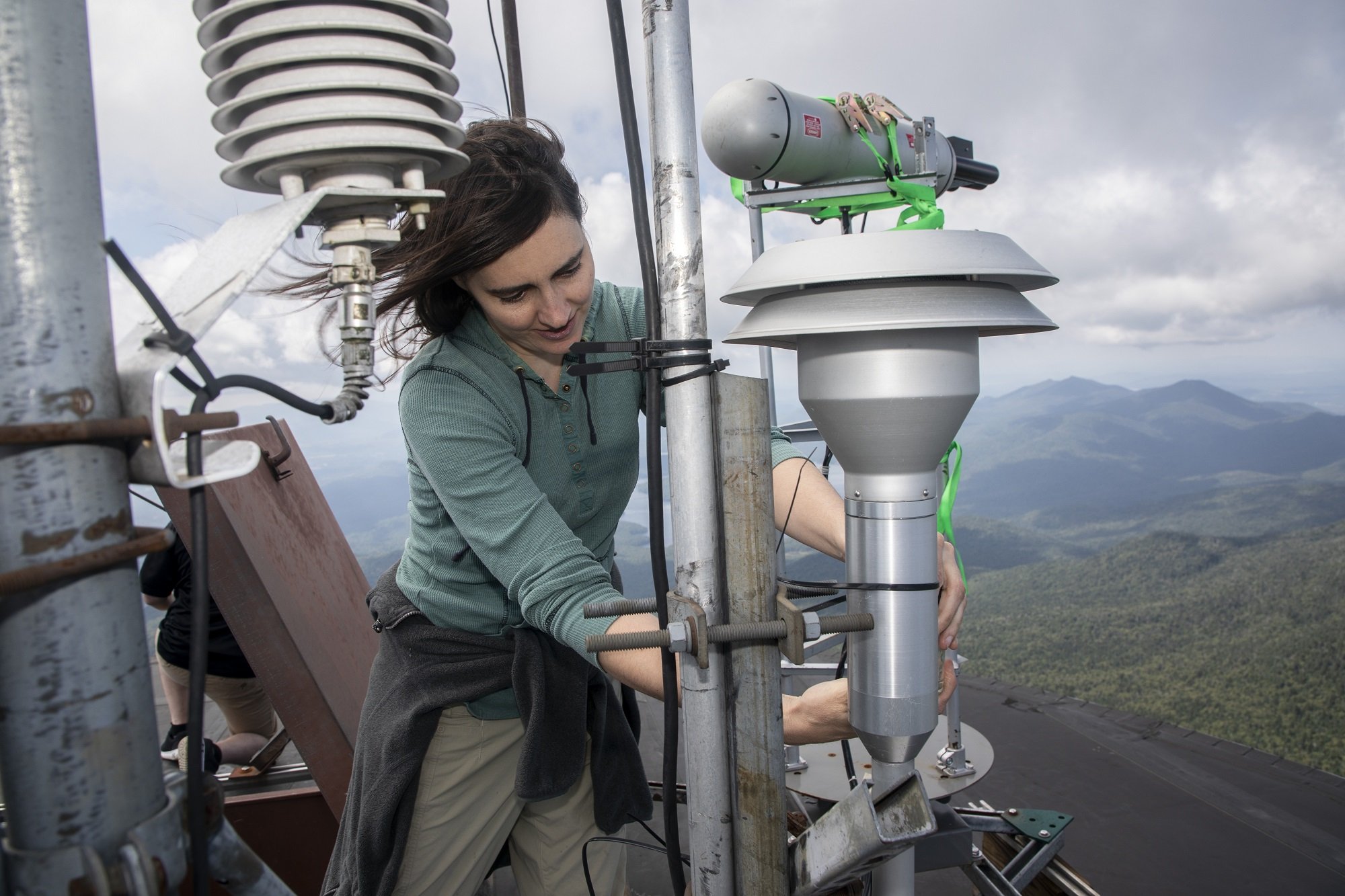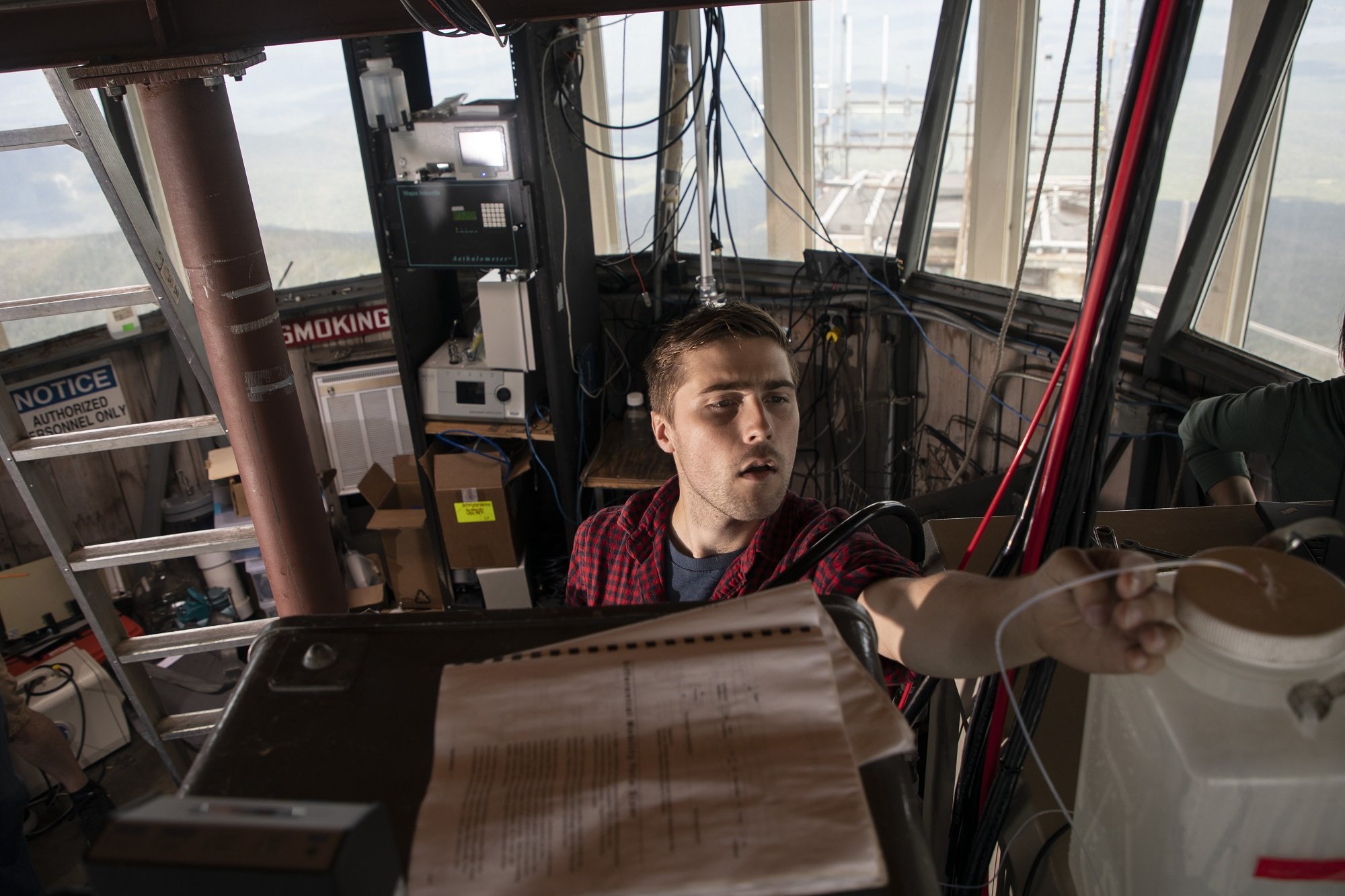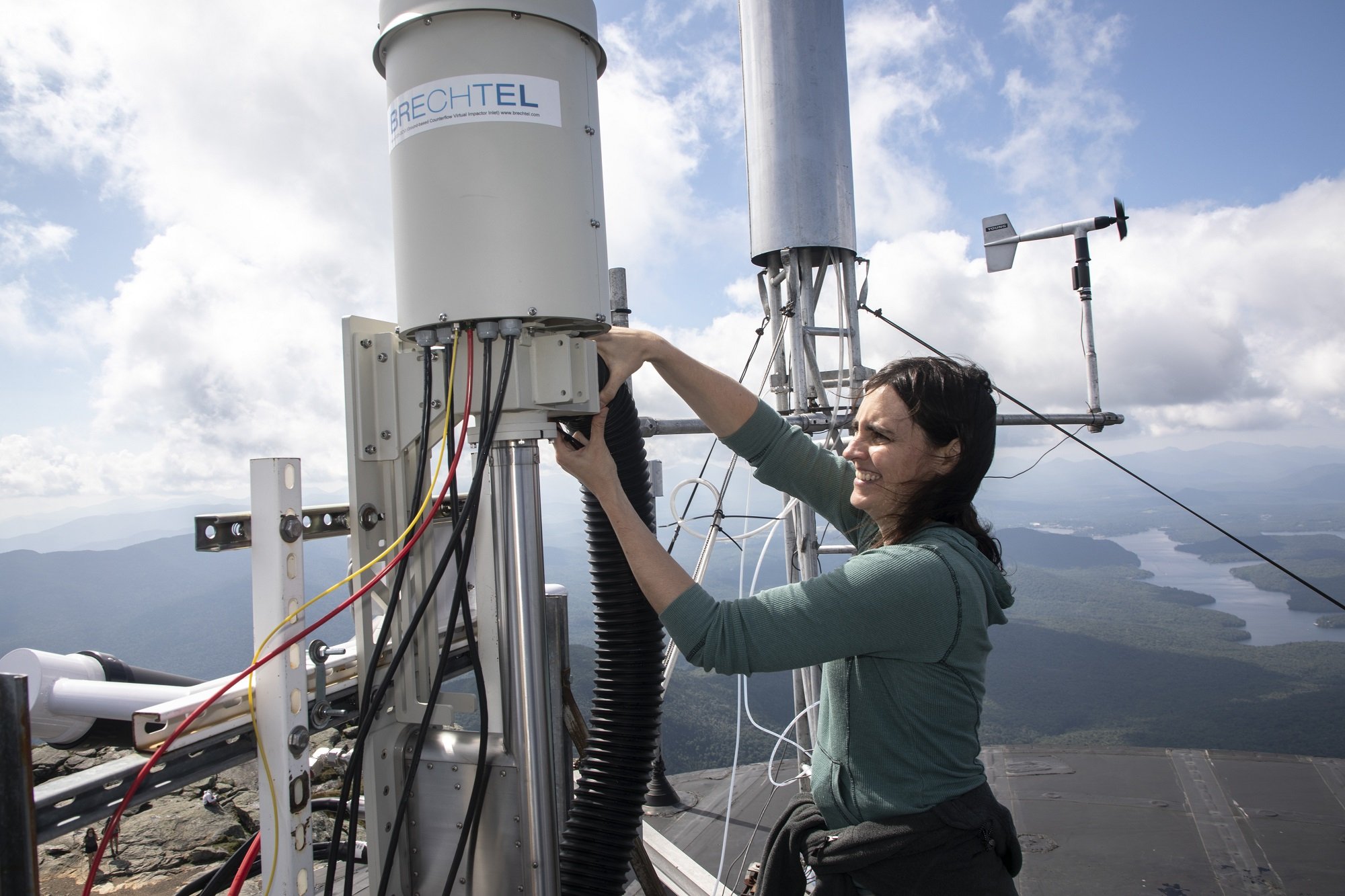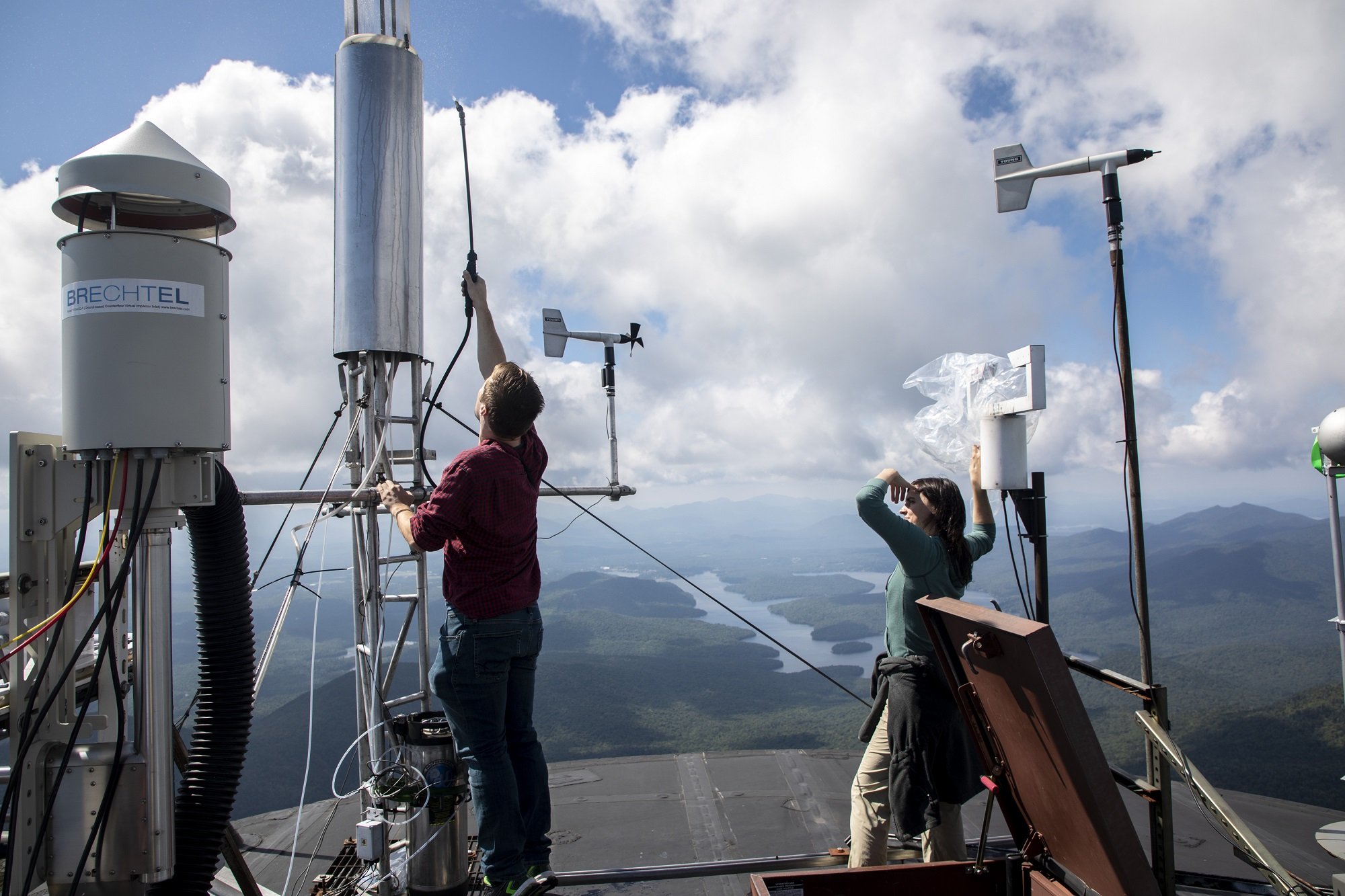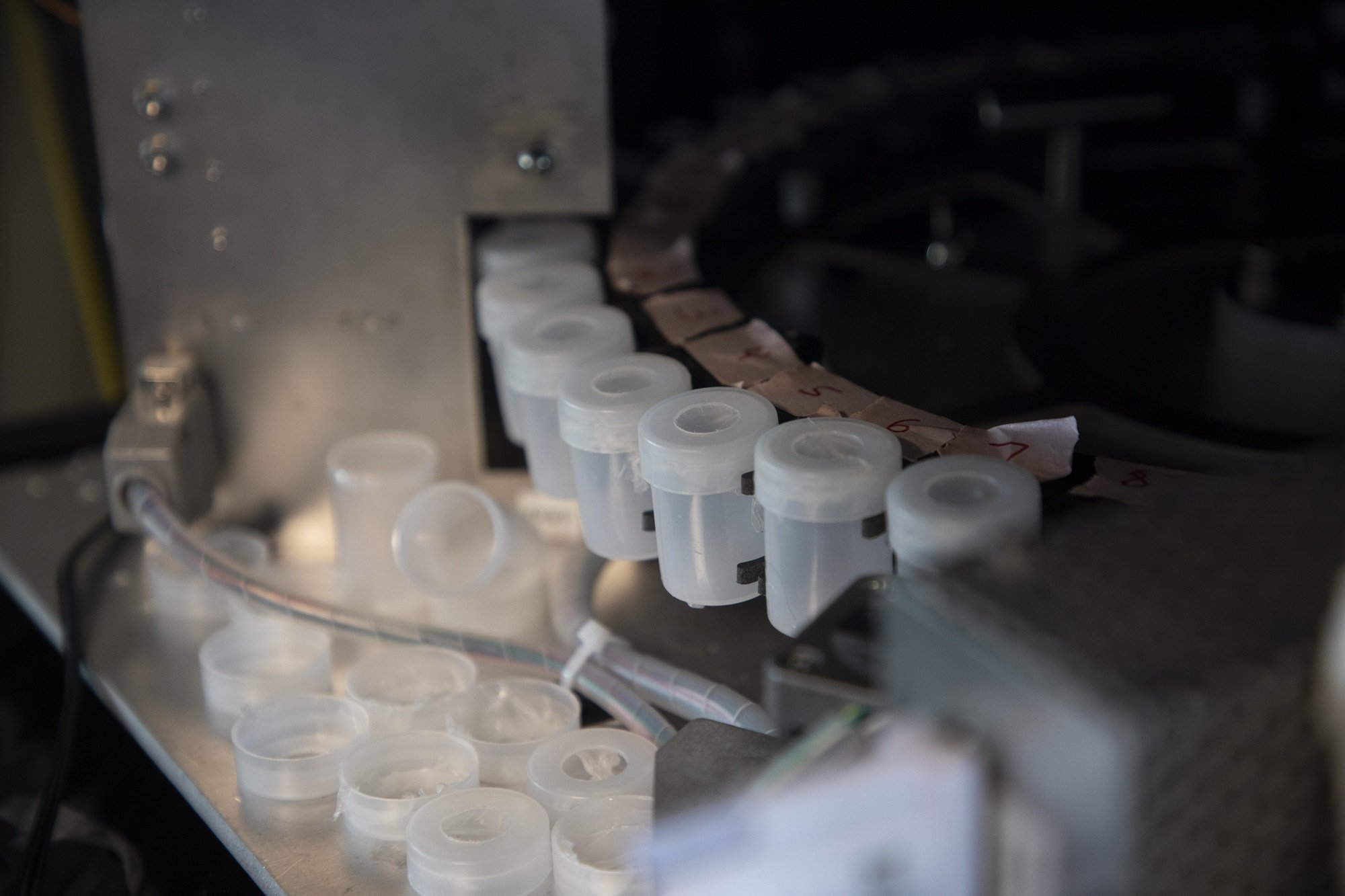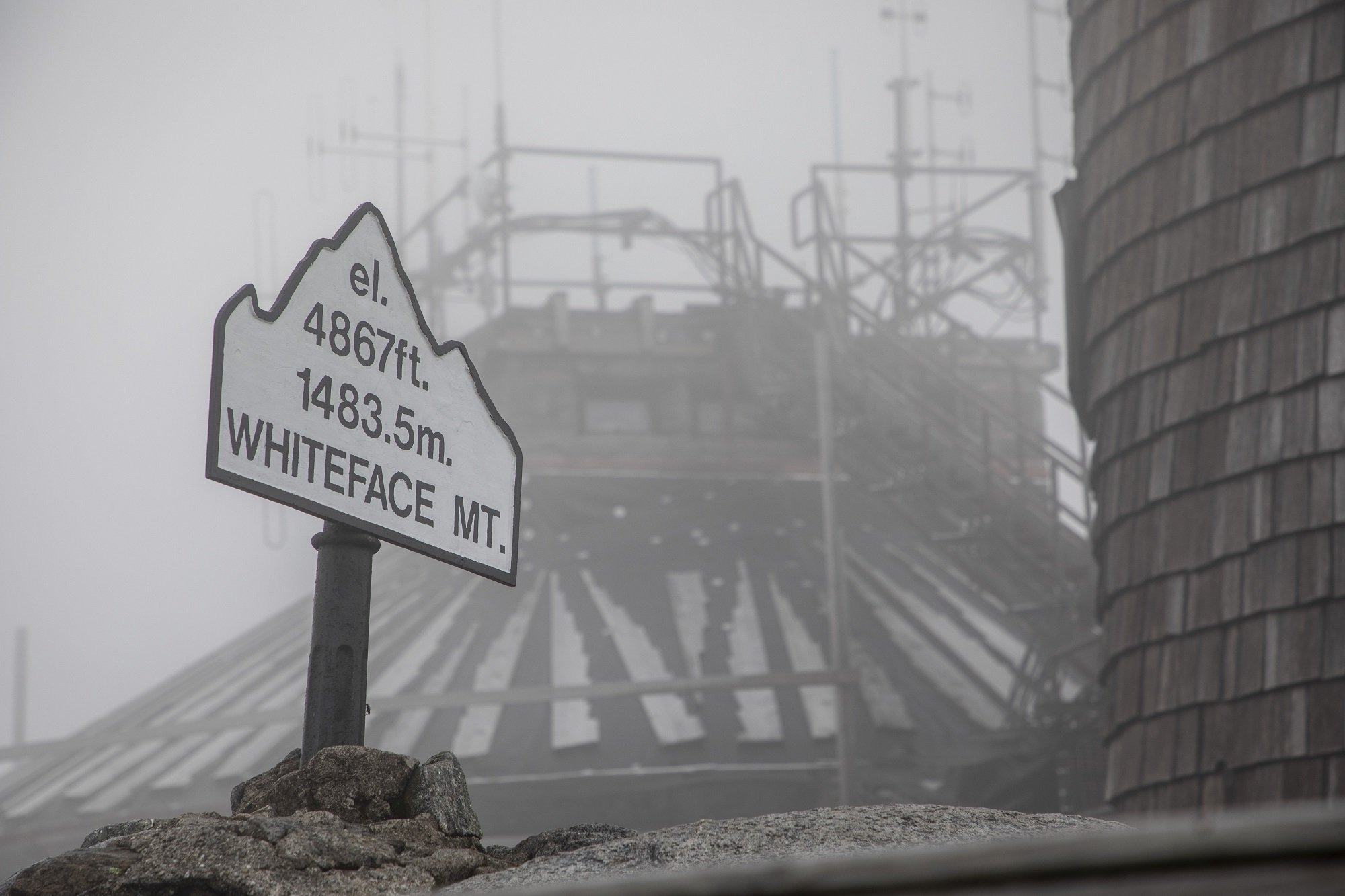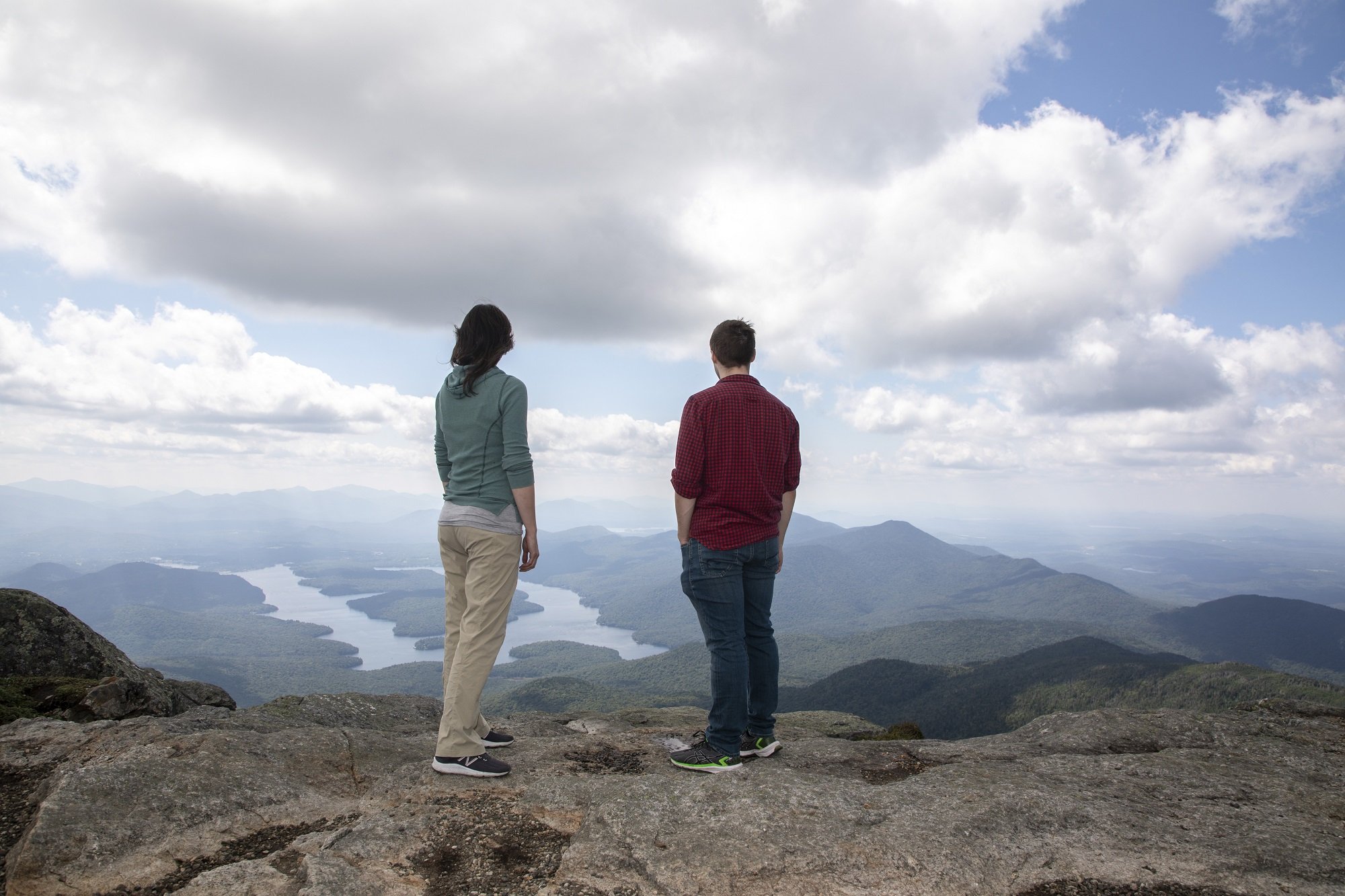UAlbany Research Team Studies Cloud-Aerosol Interactions on Whiteface Mountain
By Mike Nolan
ALBANY, N.Y. (Sept. 14, 2021) – From a young age, Christopher Lawrence was concerned about climate change and its impacts on our planet. He also has a passion for chemistry and physics.
He now gets to focus on both from 5,000 feet above sea level in the heart of the Adirondacks.
Lawrence, a fourth-year PhD student in the Department of Atmospheric and Environmental Sciences (DAES), is one of the student leaders on the cloud water chemistry research team at the Atmospheric Sciences Research Center (ASRC) Whiteface Mountain Field Station. The team is headed by Sara Lance, a research associate at ASRC.
Located at the top of the summit, the field station, known to locals as the Whiteface Observatory, has collected cloud water samples for chemical monitoring for more than 50 years and is now supported by the New York State Energy Research and Development Authority (NYSERDA). It was built to gain a deeper understanding of the interaction of chemical, physical, geological and biological processes that impact our environment. The building is distinctly carved from granite of the mountain itself and widely known for its contributions to the atmospheric sciences research community.
Research in the Clouds
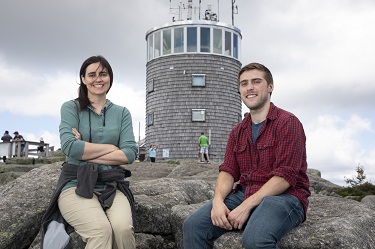
Lance, who has conducted research at Whiteface through UAlbany for the past five years, was awarded a prestigious Faculty Early Career Development (CAREER) award from the National Science Foundation (NSF) in 2020. This grant is presented to a select few junior scientists who “have the potential to serve as academic role models in research and education and to lead advances in the mission of their department or organization.”
Through the CAREER grant, Lance and her team are developing a new measurement system that uses a particle-into-liquid sampler (PILS) and ground-based counterflow virtual impactor (GCVI) to examine the interaction between tiny airborne particles known as aerosols and cloud droplet residuals, including its impacts on climate change, area visibility and human health.
The NSF funding will support their research for the next five years. Lawrence was the first graduate student to join the research team. He has since been joined by a post-doctoral researcher and three additional graduate students. The group is now exploring opportunities for undergraduate students.
“When we’re in a cloud at the summit up here, we can study what the clouds are doing to the chemical composition of the underlying aerosol and compare those chemical compositions as well,” explained Lawrence, a native of Grafton, N.Y. “Clouds play a key role in understanding how the Earth both reflects and absorbs sunlight. Aerosols are the seed to cloud formation. This interaction is an important link to how clouds impact our environment.”
“Conducting research at Whiteface was a major attraction for me when Sara first reached out with the opportunity,” he added. “I’m having a blast up here. You’re either in cloud collecting data or you have a great view.”
NASA Fellowship Opportunity
In conjunction with this research, Lawrence was also selected for a Future Investigations in NASA Earth and Space Science and Technology (FINESST) research grant this summer. It comes with an award of up to $135,000 over three years.
Using the group’s existing research and new measurement system, the NASA funding project will focus on cloud chemistry around specific pollution events, with an emphasis on biomass burning smoke, which is frequently encountered at Whiteface Mountain during active wildfire seasons in the western United States and central Canada.
NASA’s FINESST Program provides research grants to graduate students who are designing and performing research projects relevant to interests of the NASA Science Mission Directorate (SMD) in one or more of four divisions: Earth Sciences, Heliophysics, Planetary Science and Astrophysics.
A small percentage of the 835 proposals received this year were selected for funding.
“We are in a unique position to keep pushing forward the research that has been done at Whiteface over the last 50 years and make it relevant to people’s lives. There’s a long legacy here that needs to continue,” said Lance. “I’m super lucky to have found a good leader for the group, to show the other students how to do research and persevere through challenges. Chris has a good attitude, is very optimistic and works hard.”
You can learn more about the Whiteface Mountain cloud chemistry research, and meet the other member of the UAlbany team, by visiting Lance’s Research Lab website.
Photos: Patrick Dodson





